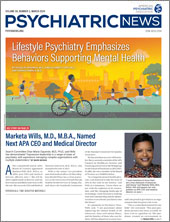Children and adolescents with type 1 diabetes are at an elevated risk for psychiatric disorders, but treatment with psychotropic medications can cause adverse effects in this patient population. A
study in
JAMA Network Open has found that the prevalence of youth receiving these medications increased dramatically in Sweden from 2006 to 2019.
“Various antipsychotics, mood stabilizers, and antidepressants have been associated with detrimental metabolic outcomes, including weight gain, hyperlipidemia, and insulin resistance,” wrote Shengxin Liu, M.Sc., a postdoctoral researcher at the Karolinska Institutet in Sweden and colleagues. “For children and adolescents with [type 1 diabetes], who already face an increased risk of metabolic complications and gastrointestinal symptoms, these adverse effects may exacerbate their health outcomes.”
Liu and colleagues used national Swedish registries to obtain data on all children (birth to 11 years) and adolescents (aged 12 to 17) who resided in Sweden at some point from 2006 to 2019. The National Patient Register provided information on patients diagnosed with type 1 diabetes and psychiatric disorders (such as depression, psychotic disorders, or personality disorders). The Prescribed Drug Register provided information on the medications dispensed to the youth. The authors specifically focused their analysis on antipsychotics, antidepressants, anxiolytics, hypnotics, mood stabilizers, and medication for attention-deficit/hyperactivity disorder (ADHD).
Among 3.7 million children and adolescents, 13,200 had type 1 diabetes, 1,866 (14.1%) of whom were dispensed psychotropic medications during the study period. Other findings included the following:
•
The prevalence of children with type 1 diabetes receiving psychotropic medications increased from 0.85% in 2006 to 3.84% in 2019.
•
The prevalence of adolescents with type 1 diabetes receiving psychotropic medications increased from 2.72% in 2006 to 13.54% in 2019.
•
Youth with type 1 diabetes consistently received psychotropic medications more than their peers without type 1 diabetes.
•
The most commonly dispensed medications included hypnotics, ADHD medications, anxiolytics, and antidepressants.
•
Psychiatric care was the primary source for prescriptions for psychotropic medications for the youth.
•
Up to 50.1% of treatments with psychotropic medications lasted more than a year.
Jillian Porter Larsen, M.D., who was not involved with the study, said she was not surprised by the findings given that youth with chronic medical conditions have higher rates of psychiatric illness. This may be due to a possible link between inflammation and psychiatric disorders, but it also likely has to do with the increased stress youth feel dealing with their illnesses. Larsen is a clinical assistant professor in the Department of Psychiatry and Behavioral Sciences in the Division of Child & Adolescent Psychiatry at Stanford University School of Medicine.
Larsen agreed with the authors’ conclusion that pediatric diabetes care must be integrated with mental health care when managing psychiatric disorders in this population. Embedding child and adolescent psychiatrists into pediatric practices, such as by making them available for consultations, is an effective model for improving access to care amid the shortage of psychiatrists, she added.
Further, she stressed the importance of exploring nonpharmacological treatment options for medically complex youth. “Even for moderate depression or anxiety, we really need to try things like evidence-based [cognitive-behavioral therapy] treatment first, and then see if pharmacological options are necessary,” she said.
Overall, the lack of availability of mental health professionals to provide nonpharmacological treatment may contribute to the rise in psychotropic medication prescriptions among medically complex youth, Larsen hypothesized.
“For some in community settings, it may feel like pharmacologic treatment is the only option, and some feel that at least it’s better than nothing,” she said. That’s why integrating mental health professionals into different treatment settings, such as pediatric diabetes clinics, can be invaluable. ■

